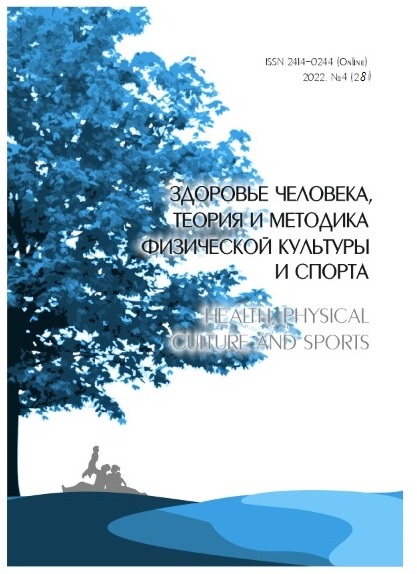KARATE DO AS OCCUPATIONAL THERAPY
Abstract
Abstract
In this text, we present a research in which, through individual treatment, we examine the influence and effect of karate to occupational therapy for people with mild mental handicap. Our primary goal was to set guidelines for the people with special needs to be successfully included outside the usual methods of rehabilitation and school activities. The research included an initial control and final experiment measuring reaction time, in which we focused subjects on the mentioned therapy model (group; n = 18) in a group workshop plus additional individual sessions with each individual separately. In addition, the group had additional sessions with other auxiliary activities, and all participants were between 12 and 15 years old, of both genders.
The results confirmed that the occupational therapy model with karate improves the subjects' physical abilities, specific skills and the ability to pay attention, perception and motor reaction.
Downloads
References
1. Dr.Jozef Bezak (1985),Primena Psihologije u Procesu Treninga , Savremeni Trening Beograd, 1985 ,39-41
2. Dragan Milanovic, Igor Jukic, Dinko Vuleta (2002) Planing and programing in sport https://bs.scribd.com/.../ 1-10
3. Erakovic T (1995), Korektivno Pedagoski Rad Zavod za Udzbenike i Nastavna Sredstva, 1995 Beograd,(In Serbian)
4. Erakovic T,(1990) Pokazi mi pa cu znati, Dnevnik, 1990 Novi sad.(in Serbian)
5. H.Kanazawa (2004) ,The Complet Kumite Karate Fighting Tehniques Kodansha international,Tokyo-New York-London,2004
6. Hrnjica, S. (1991). Ometeno dete. Zavod za udžbenike i nastavna sredstva, 1991 Beograd:. (in Serbian)
7. Hrnjica, S. (1997). A Child with Developmental Disabilities in Elementary School. Belgrade1997: The School of Pedagogy.
8. Hrnjica, S. i sar. (2009). Škola po meri deteta 2. Beograd: Save the Children UK, Pro-gram za Srbiju(in Serbian)
9. Jeffreys, I (2006) Optimising speed and agility development using target classifications and motor control principles Part One. Professional Strength and Conditioning (3) 11-14
10. Ljupco E Ajdinski (1982); Integralna Rehabilitacija na Mentalno Retardiranite Lica, Skopje1982. (in Macedonian)
11. M.Groser,S.Stariska(1982) ,Testovi za Proveru Brzine u Sportu , Savremeni Trening,Beograd 1982,8-12 (in Serbian)
12. Monika Bauersfeld (1986), Brzina i Motoricke Sposobnosti , Savremeni Trening, Beograd 1986,1-10 (in Serbian)
13. Renato Mano(1987),Prilagodjavanje i Trening , Savremeni Trening,Beograd 1987,4-10 (in Serbian)
14. Šali B. (1980). Wecslerov test inteligencije za decu. Priručnik. Zavod SR Slovenije za produktivnost delà Ljubljana. Center za psihodijagnostična sredstva, Lublajana. (in Serbian)
15. Schmidt, R. A., & Lee, T. D. (2005). Motor control and learning: A behavioral emphasis (4th ed.). Champaign, IL: Human Kinetics. Book
16. Terman, L. M. (1948). The measurement of intelligence, 1916. In W. Dennis (Ed.), Readings in the history of psychology (pp. 485–496). Appleton-Century-Crofts. https://doi.org/10.1037/11304-053
17. Terman, Lewis. (1916). The Measurement of Intelligence: an Explanation of and a Complete Guide for he Use of the Stanford Guide for the Use of the Stanford Revision and Extension of the Binet-Simon Intelligence Scale (I.Q., pg. 53, etc.). Houghton Mifflin Co.
18. Terman, Lewis. (1917). “The Intelligence Quotient of Francis Galton in Childhood,” American Journal of Psychology, 28: 209-15.
19. Patrick McDermott & Ferol Arce (2011)The Taikyoku Kata: Karate's Supreme Ultimate in 5 Rings,Oakland,California 2011,ISBN-10:1-4565-1201-3
20. UNESCO (1981) Part A II p/gph 73-86 International year of disabled person https://unesdoc.unesco.org/ark:/48223/pf0000049286?posInSet=8&queryId=4e99c65b-f20e-4d5e-b58d-41e40cb4e5f4
21. V.Korenberg(1980),Motoricke Greske u Sportu. Savremeni trening 1980,11-19,FIZ Moskva 1979. (in Serbian)
22. Wechsler, D. (2014),"Wechsler Intelligence Scale for Children, Fifth Edition: Canadian 322 (WISC-V [superscript CDN])." Toronto, Ontario: Pearson Canada AssessmentCitation
23. World Health Organization. Division of Mental Health (1994)WHO/MNH/92.16.Rev.1. Unpublished, 1994. The ICD-10 classification of mental and behavioural disorders : conversion tables between ICD-8, ICD-9 and ICD-10
24. World Health Organization (1992). The ICD-10 Classification of Mental and Behavioural Disorders: Clinical Descriptions and Diagnostic Guidelines. WHO, 1992.Thumbnail.
An author should not normally publish manuscripts describing essentially the same research in multiple journals or publication venues. Such redundant publication is generally considered to constitute unethical publishing behavior, and if discovered may result in a manuscript under consideration being rejected, or a published article being retracted.
Authors of manuscripts reporting on original research should present an accurate account of the work performed, accompanied by an objective discussion of its significance. Underlying data should be represented accurately in the manuscript. The manuscript should contain sufficient detail and references to permit others to replicate the work. The fabrication of results and the making of fraudulent or knowingly inaccurate statements constitute unethical behavior and may be cause for rejection or retraction of a manuscript or published article.





